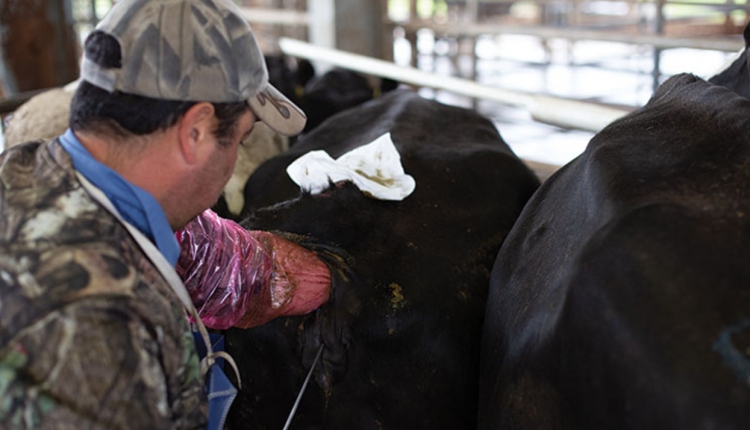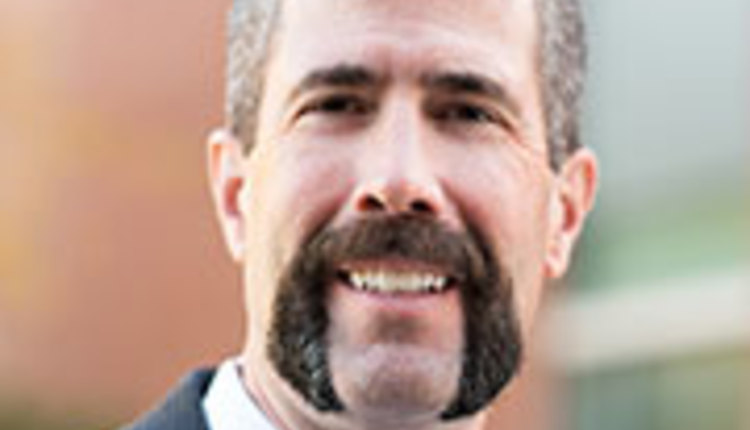The author is professor of animal sciences at Kansas State University, Manhattan.
Oh, how things have changed in the last 125 years! Although no one now living was alive in 1885, we have good evidence that dairy cattle reproduction in 2010 is very different - not the biological processes - but how we manage the cow. We have learned many things about The Foster Mothers of the Human Race, and more will be discovered in years to come.
In the late 1800s, the average U.S. dairy cow was producing less than 4,000 pounds of milk annually. Since then, careful research has improved the selection methods, breeding, feeding, and management to the point where the modern U.S. dairy cow averaged more than 20,500 pounds of milk during 2009. It is not uncommon to find herds whose rolling herd averages have or are approaching 30,000 pounds of milk. Only five of the seven dairy breeds were found in U.S. dairy herds in 1885. The Milking Shorthorn would not be officially recognized as a major dairy breed until 1972 and the Red and Whites sometime after that. Artificial insemination was not yet in vogue and would not be introduced on most U.S. dairy farms until the 1940s and 50s. Your only source of new genes may have resulted from the neighbor's bull "venturing uninvited into your lower 40."
A wide array of discovery
A few key discoveries have facilitated much of what we do today in reproductive care.
So what will the next 125 years bring to the dairy farm?
We can be certain that technology will be important in how we manage cows. Clearly, the younger generations seem to be more gadget and technology oriented than some of us with more or less snow on top. We must not forget, however, our roots. W. D. Hoard said that "if the farmers of the United States were as wise on the question of maintaining fertility as they are in the adoption of machinery (gadgets), what a country this would be."
I believe Mr. Hoard nailed it! We must be more savvy in what we choose to do when making changes in our management. Adopting new ideas and tools is important, but we must be careful to not try to fix something that is not broken. We often hear of changes made by veterinarians, consultants, and dairy producers that are minor "tweakings" of proven research - all with the intended goal of getting better pregnancy rates or more of this or that. These good intentions often cause more problems than solutions.
All the wonderful gadgetry in the world cannot replace the wisdom and good judgment of the human soul. People still must make decisions that lead to change. We still must be the caretakers of these Foster Mothers. And we still must continue to appreciate and understand the wonderful process and miracle of life.
W. D. Hoard said: "The cow is thoroughly responsive to human sympathy and humane treatment from day to day and year to year; her productive capacity is largely governed by care she receives and feed given her." And, may I add, the care we give to these Foster Mothers at calving and A.I. breeding. May we all continue to fill well these vital roles - whatever is our part in the dairy industry.
Oh, how things have changed in the last 125 years! Although no one now living was alive in 1885, we have good evidence that dairy cattle reproduction in 2010 is very different - not the biological processes - but how we manage the cow. We have learned many things about The Foster Mothers of the Human Race, and more will be discovered in years to come.
In the late 1800s, the average U.S. dairy cow was producing less than 4,000 pounds of milk annually. Since then, careful research has improved the selection methods, breeding, feeding, and management to the point where the modern U.S. dairy cow averaged more than 20,500 pounds of milk during 2009. It is not uncommon to find herds whose rolling herd averages have or are approaching 30,000 pounds of milk. Only five of the seven dairy breeds were found in U.S. dairy herds in 1885. The Milking Shorthorn would not be officially recognized as a major dairy breed until 1972 and the Red and Whites sometime after that. Artificial insemination was not yet in vogue and would not be introduced on most U.S. dairy farms until the 1940s and 50s. Your only source of new genes may have resulted from the neighbor's bull "venturing uninvited into your lower 40."
A wide array of discovery
A few key discoveries have facilitated much of what we do today in reproductive care.
- Heat synchronization was demonstrated by using exogenous or external progesterone injections to control the estrous cycle.
- Development of the artificial vagina for semen collection.
- Creation of the electro-ejaculator to allow collection of bulls when more traditional collections via the artificial vagina were not possible.
- Invention of liquid nitrogen refrigerators to store frozen semen.
- Procedures were developed for freezing and long-term storage of semen so once frozen in liquid nitrogen, it could easier be transported world-wide.
- Packaging of frozen semen in glass ampoules became obsolete as the traditional packaging medium for frozen semen was replaced by either the 1/2 or 1/4 cc plastic straw.
- Approval of prostaglandins, progesterone-impregnated intravaginal inserts, and GnRH by the U.S Food and Drug Administration has become invaluable in managing timed A.I. breeding programs.
- Heat detection aids such as the heat mount tail patches, pedometers or activity tags, and electronic radiotelemetric rump-mounted pressure sensitive devices were developed to assist in identifying cows in heat and eligible for A.I. breeding.
- Development of pregnancy diagnostic tools beginning with transrectal palpation of the embryo and its membranes.
- Adoption of transrectal ultrasonography and blood chemical tests have facilitated earlier diagnosis of open cows so we can endeavor to get cows with calf.
- On-farm multiple ovulation and embryo transfer became available to dairy producers.
- Sexed semen to produce more calves of the desired gender.
So what will the next 125 years bring to the dairy farm?
We can be certain that technology will be important in how we manage cows. Clearly, the younger generations seem to be more gadget and technology oriented than some of us with more or less snow on top. We must not forget, however, our roots. W. D. Hoard said that "if the farmers of the United States were as wise on the question of maintaining fertility as they are in the adoption of machinery (gadgets), what a country this would be."
I believe Mr. Hoard nailed it! We must be more savvy in what we choose to do when making changes in our management. Adopting new ideas and tools is important, but we must be careful to not try to fix something that is not broken. We often hear of changes made by veterinarians, consultants, and dairy producers that are minor "tweakings" of proven research - all with the intended goal of getting better pregnancy rates or more of this or that. These good intentions often cause more problems than solutions.
All the wonderful gadgetry in the world cannot replace the wisdom and good judgment of the human soul. People still must make decisions that lead to change. We still must be the caretakers of these Foster Mothers. And we still must continue to appreciate and understand the wonderful process and miracle of life.
W. D. Hoard said: "The cow is thoroughly responsive to human sympathy and humane treatment from day to day and year to year; her productive capacity is largely governed by care she receives and feed given her." And, may I add, the care we give to these Foster Mothers at calving and A.I. breeding. May we all continue to fill well these vital roles - whatever is our part in the dairy industry.










